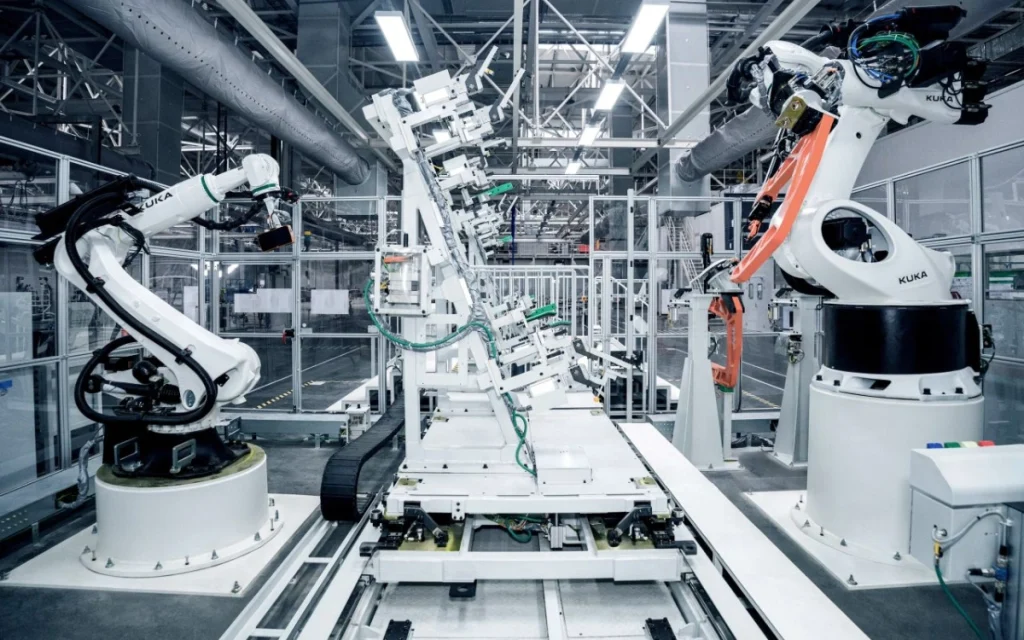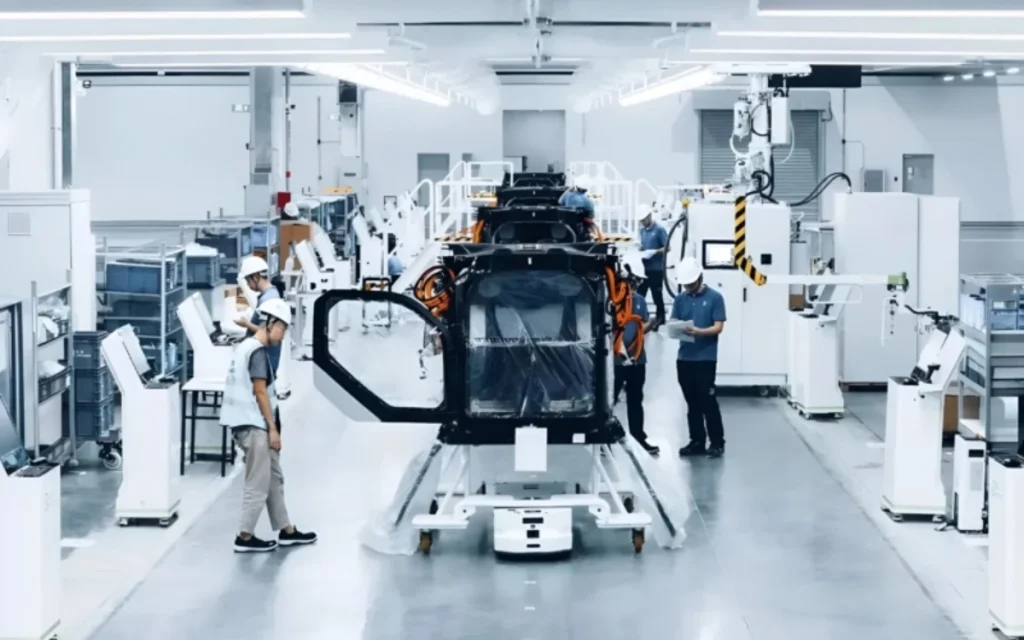Xpeng launches the world's first mass production line for flying cars
Published on Nov 06, 2025 at 9:06 AM (UTC+4)
by Jason Fan
Last updated on Nov 10, 2025 at 11:59 AM (UTC+4)
Edited by
Kate Bain
Xpeng has officially entered the age of flying cars, with its subsidiary Aridge rolling out the first ‘Land Carrier’ from a cutting-edge factory in Guangzhou.
The milestone marks the launch of what Xpeng proudly calls the world’s first mass-production line for flying vehicles.
This is a serious step towards turning science fiction into something you can drive (and fly).
According to the Chinese carmaker, the first batch will undergo experimental flight tests, laying the ground work for full-scale deliveries expected as early as next year.
SBX CARS – View live supercar auctions powered by Supercar Blondie
You can choose to fly it manually, or leave it in autonomous mode
Spanning roughly 120,000 square meters, the facility is a futuristic playground for engineers and dreamers alike.
It’s designed to build Xpeng’s modular flying car: a clever two-part machine that splits into a land vehicle and an aerial vehicle.

The land module, or ‘mother vehicle,’ looks more rugged than you might expect, with three axles, six wheels, all-wheel drive, and rear-wheel steering.
It’s big enough to haul gear, nimble enough for city streets, and compact enough to slide into a standard parking space, with no helipad required.
When it’s time to take off, the aerial module detaches to reveal a sleek, six-rotor, dual-ducted flying machine made from lightweight carbon fibre.

Inside, a panoramic 270-degree cockpit gives passengers the kind of view pilots dream of, while the design strikes a balance between agility and strength.
In manual mode, you can steer it with a single control stick.
And in autonomous mode, the ‘Land Carrier’ can handle everything from route planning to landing, even returning home at the push of a button.
Xpeng aims to produce 10,000 flying cars per year
The plant itself is as high-tech as the machines it builds.

Five core workshops handle every stage of production, from crafting carbon-fibre parts to testing propulsion systems and fine-tuning autonomous controls.
There’s even a cloud-based calibration system that checks flight control, weight balance, and driving performance automatically.
The factory is also pretty eco-conscious as well.
Xpeng says it runs on photovoltaic power, uses energy-efficient systems, and employs a digital energy management network to keep emissions low.
Once fully ramped up, it’s expected to produce 10,000 flying cars a year, or the equivalent of one car every hour.

And the orders have already begun.
The company recently received 600 pre-orders for its ‘Land Carrier’ flying car from the Middle East, with the vehicles to be delivered between 2026 to 2027.
While Xpeng isn’t the only one developing flying cars, the company is one step ahead in terms of mass production.
DISCOVER SBX CARS: The global premium car auction platform powered by Supercar Blondie
Jason Fan is an experienced content creator who graduated from Nanyang Technological University in Singapore with a degree in communications. He then relocated to Australia during a millennial mid-life crisis. A fan of luxury travel and high-performance machines, he politely thanks chatbots just in case the AI apocalypse ever arrives. Jason covers a wide variety of topics, with a special focus on technology, planes and luxury.




